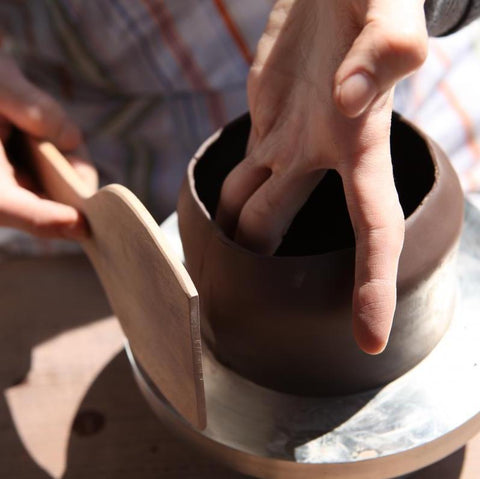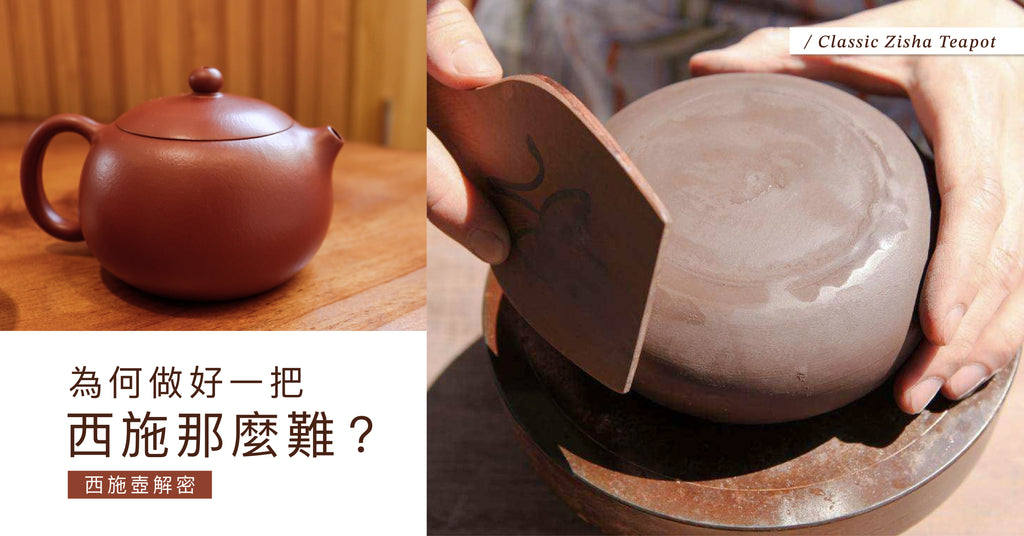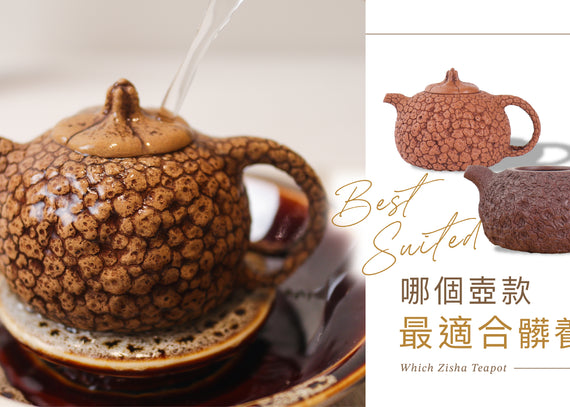西施壺是十大經典紫砂壺款,飽滿圓潤、小巧完美的壺型百看不厭。別小看製作這款經典壺品的難度,連工藝師都公認難做的西施壺,究竟難度在於什麼地方?一起來了解如何製成西施壺吧!
西施壺的由來
西施壺的製作靈感本是來自古代美人西施的胸部,外形圓潤豐滿,圓滾滾的壺型給人一種完美和諧之感,古樸典雅的模樣也吸引很多壺友,尤其是女性追捧,收藏使用。短嘴、倒把、截蓋皆為西施壺的特點,上品西施壺不僅注重壺身弧度,同時講究比例平衡,配件做工的精細度絕對影響壺品質素,因此有時候工藝師為了降低製作難度,選擇以半手工的方法製作西施壺。

製作西施壺難在哪?
#1:壺身弧度保持一致
所有圓身壺款都需面對這個難題,工藝師首先要把泥片拍打得均勻一致,然後圍桶身,再利用工具逐漸拍打成圓形。如果製壺時沒有發覺壺品弧形不圓,則會影響燒製後成品的的品相,失去圓潤飽滿的感覺。即使工藝師以模具輔助成形,也需要他們將壺身拍打到與模具的弧度、大小一致,再放進模具,搪好壺身,此舉亦需要工藝師擁有一定的製壺技巧。因此無論全手工還是半手工西施壺,壺身的圓弧型狀是製作過程的大難關。

#2:壺蓋、壺身要緊密
製作截蓋難度在於壺蓋與壺身是否吻合。做工精細的截蓋可以完美過渡到壺身,大小與壺口一致,按住壺蓋而不易晃動。製作截蓋非常考驗工藝師的製壺功力,除了要掌控泥料收縮比,也要考慮蓋子的弧度。另外有些工藝師會製作「雙層蓋」的截蓋,這多為全手工西施壺的特徵,難度也會更高。
#3:壺嘴、壺把比例恰當
西施壺很重視壺嘴與壺把的比例大小,過大或過小的配件都會顯得壺品比例不協調,影響品相。西施壺對於壺嘴壺吧的位置要求嚴格,黏合配件必須保持三點一線的直線分佈,如果工藝師貼上配件時稍有不慎,會出現歪把歪嘴的壺品,這是時有發生的情況。所以手工製的西施,非常考驗工藝師的細心與耐性。
全手工v.s.半手工西施
全手工壺與半手工壺最大分別在於壺品呈現的手工痕跡與的工藝品的氣韻。全手製作的西施難度較大,相對半手西施稍貴也是合理。如果壺友喜歡手工感覺,不在意比例、弧度是否完美,可以考慮全手工壺。如果壺友講究完美無暇,配件稍大或小都會覺得礙眼,不妨考慮半手壺西施,完美度相對全手製作的壺品更高。儘管如此,兩種方法製成的壺品,其實不會影響泡茶效果。

以上就是西施壺的製壺要點。紫砂茶壺不僅是茶具,更是匠人精心製作的藝術品。無論是送禮還是自用,記得了解自己的喜好,才能買到合適的壺品!
建議閱讀:





